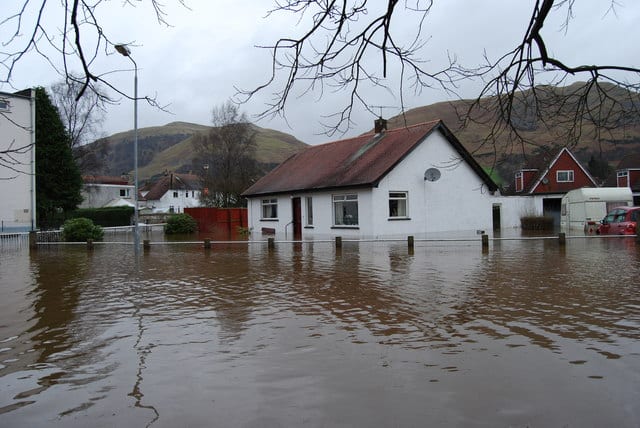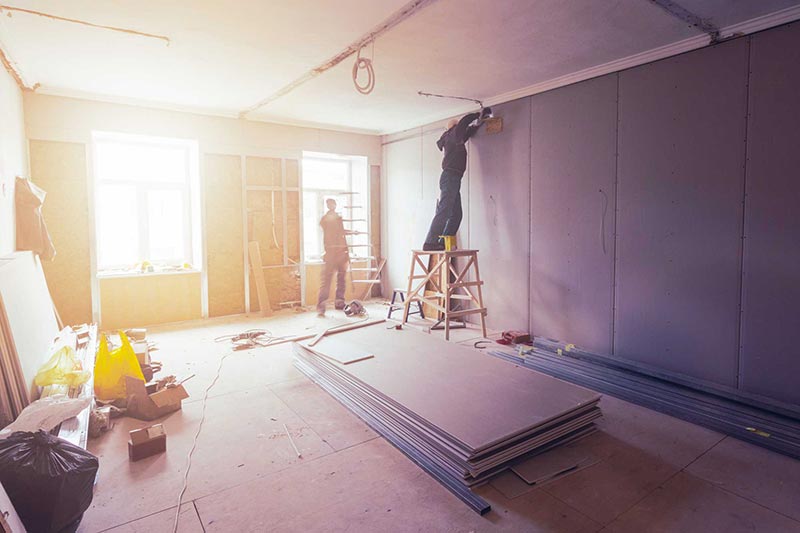
Water Damage In Your Home? Use These Tips For Cleanup.
So you’re suffering from water damage in your home. Don’t worry, we’ve got some helpful tips to get you on your way to a fully restored home. If there is a lot of damage, save yourself the hassle and call in the Professionals. If it’s something you can handle yourself, read on.
What To Do First
The very first thing you need to do before you enter an area suffering from water damage is make sure the main power is off!
Once that’s done, take a look around the area and check for potential safety hazards. With that in mind it’s very important to make sure you’re fully covered in protective clothing before you enter the area. Boots, and gloves at a minimum!
Depending on where the water came from you will be able to figure out which contents affected can be restored vs replaced. Here’s how to classify your loss:
• Category 1 water is from a clean and sanitary source, such as faucets, toilet tanks, drinking fountains, etc. Items affected can be restored safely. The longer you wait to mitigate, the faster category 1 can quickly degrade into category 2.
• Category 2 aka grey water has a level of contaminates that may cause illness or discomfort if ingested. Sources include dishwasher or washing machine overflows, flush from sink drains, and toilet overflow with some urine, but not feces.
• Category 3 black water can cause severe illness or death if ingested, sources include sewer backup, flooding from rivers or streams, toilet overflow with feces, and stagnant water that has begun to support bacterial growth. Items affected by a Category 3 loss would need to be replaced.
Next figure out what class of damage you have:
• Class 1 is the easiest class to deal. Only part of a room or area was affected, there is little or no wet carpet, and the moisture has only affected materials with a low permeance rate, such as plywood or concrete.
• Class 2 affects an entire room, carpeting and pad, the water has wicked up the walls at least 12”, and there is moisture remaining in structural materials.
• Class 3 is when your ceilings, walls, insulation, carpet and sub-floors are all saturated. The source is usually from overhead.
• Class 4 is where there has been enough water and time to saturate materials with very low permeance, such as hardwood, brick, or stone.
The IICRC strongly recommends that in water damages where there are contaminants present (e.g., bacteria, sewage, mold) or where small children or immune-compromised family members are residing that an inspection be conducted by a certified Professional Restoration mitigation team.
Sitting water can damage or deteriorate the structure of your home creating more potential hazards. It’s important to start the drying process ASAP!
Documenting the Water Damage
Now that you can have assessed the level of your water damage, and if you are ready to keep going on your own, it’s very important that you take plenty of photos. This will come in handy if you do end up dealing with the insurance company later on.
When You’re Ready To Begin Drying
When you’re ready to begin the drying process head to the attic first. It sounds crazy, we know, but it’s true. Insulation can carry water all the way up to the attic and hold it there for some time while the excess heat of the attic creates the perfect environment for mold to grow at a rapid pace.
Depending on the age of your home you will either want to dry the area out very quickly or more slowly. If your home is new you’ll want to dry it out very quickly so as not to encourage the growth of mold or to allow further structural damage. If you’re living in an older home drying the water out quickly could cause the materials in your home to crack as they are older and more fragile.
For drying the area, gather up all box fans in the house to start air moving in the affected areas. High velocity air movers dry best and can be rented daily from local home improvement stores. Plan to keep them on for a few days.
If you’ve followed all of these steps and find yourself dealing with mold or other issues from water damage feel free to call the experts at Professional Restoration. Our team really does care, and is available 24/7 for advice or a fast response. Call 303-922-4001

